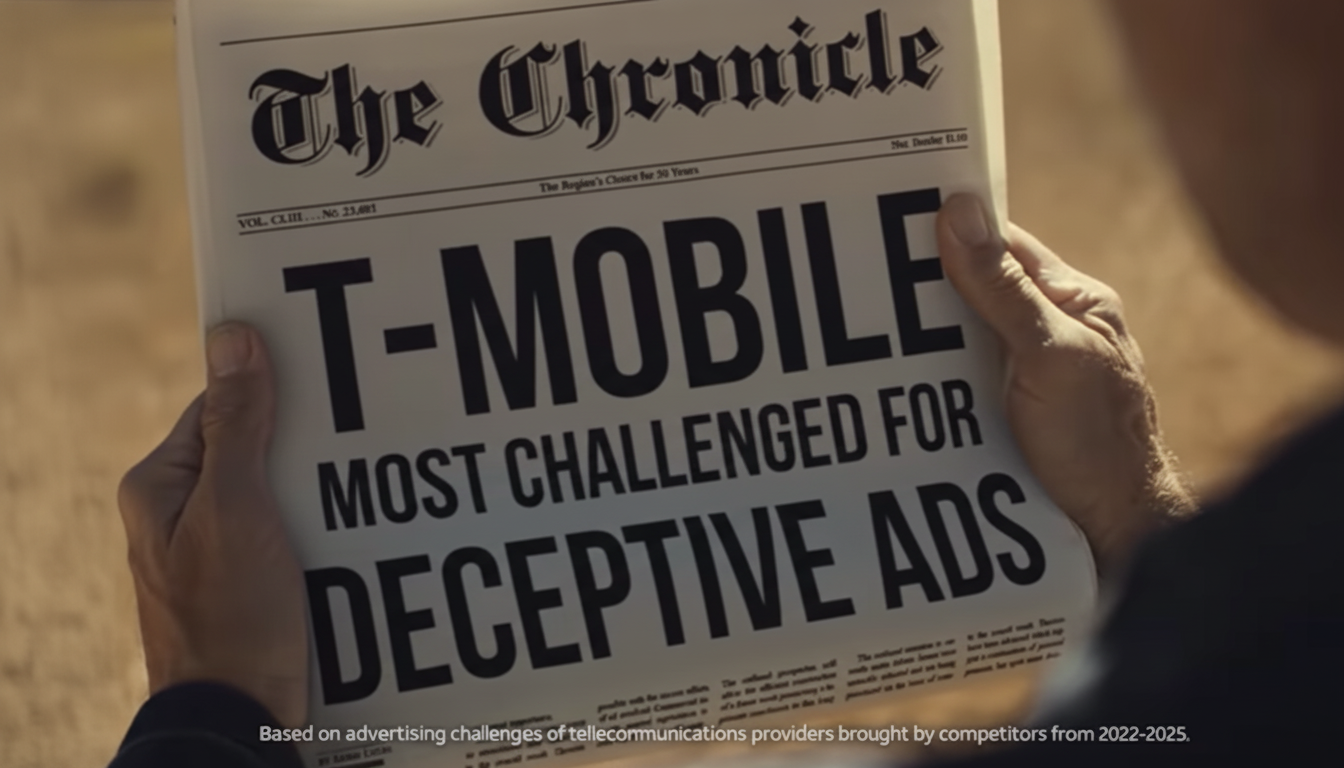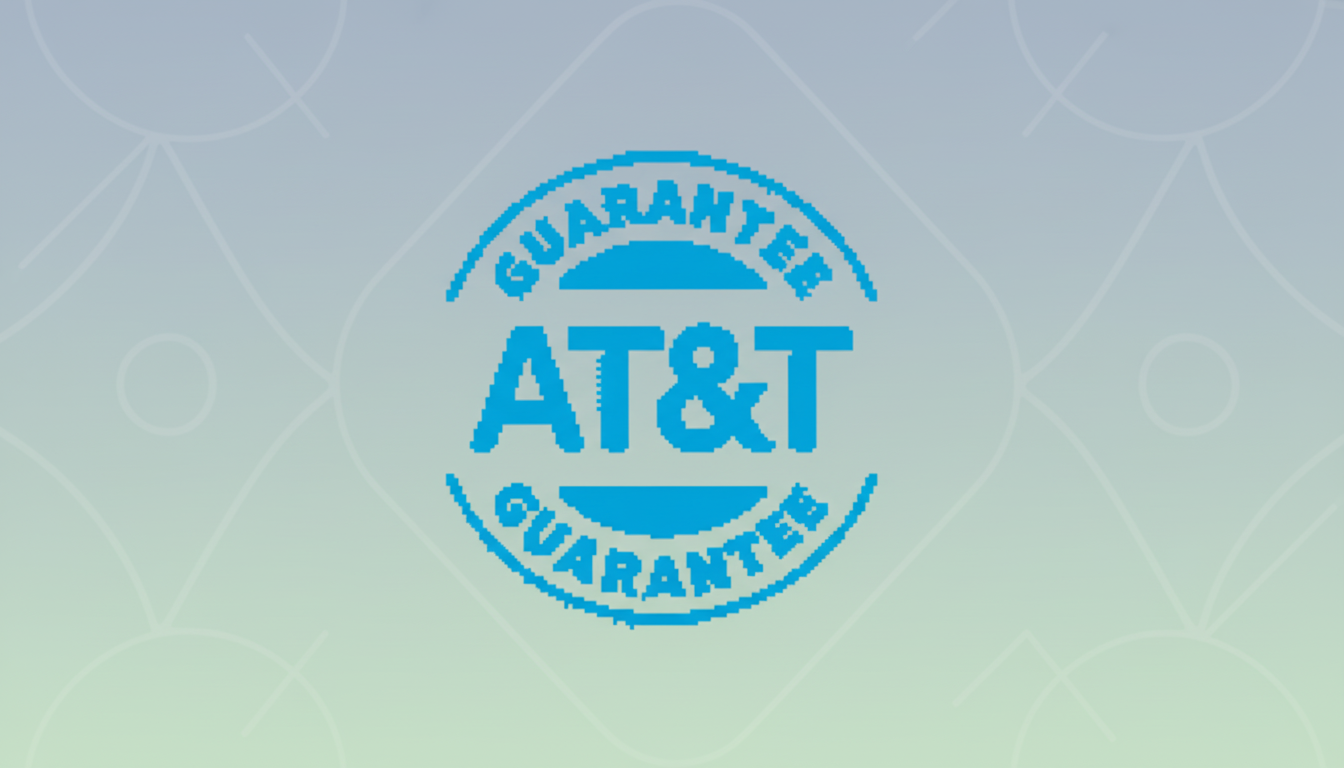AT&T has shifted from quiet buildouts to an aggressive rebuttal, unveiling a high-profile ad push that calls out the Un-carrier’s “untruths” and puts trust, coverage, and consistency at the center of its message. Fronted by actor Luke Wilson, the campaign positions AT&T as the steadier hand in US wireless, aiming squarely at T-Mobile’s bolder marketing and growth narrative.
AT&T Goes On Offense With Reliability-Focused Ads
The new creative leans into heritage and dependability. Wilson opens by framing AT&T as the operator that has “carried America’s calls” for generations, then pivots to accuse T-Mobile of broken promises. The supporting claims are concrete: AT&T says it has invested $145 billion in US connectivity over the last four years, asserts a coverage edge measured in 300,000+ additional square miles versus its rival, and touts an AT&T Guarantee that offers bill credits after lengthy, unexpected outages.
- AT&T Goes On Offense With Reliability-Focused Ads
- The Network Claims Behind AT&T’s Latest Punches
- Where T-Mobile Still Sets the Pace in 5G Performance
- Follow the Money and the Fiber Driving AT&T’s Strategy
- What Independent Tests Reveal About Coverage and Speed
- Will the Campaign Move the Needle With Reliability-First Users

The messaging is calibrated for customers who value predictability over splashy speed peaks. It also signals AT&T’s willingness to contest perception, not just performance metrics, at a moment when the industry is grappling with shifting economics and intensifying competition from cable MVNOs.
The Network Claims Behind AT&T’s Latest Punches
Coverage claims can be tricky. A lead in square miles typically underscores rural breadth, where low-band spectrum goes far, rather than dense urban capacity. AT&T wants the public to notice that distinction, arguing that a map measured in land area matters for road-trippers, field workers, and anyone outside major metros who needs fewer dead zones.
On reliability, AT&T points to independent testing that favors steadiness over spikes. RootMetrics’ large-scale drive tests have repeatedly highlighted AT&T’s network consistency and reliability across many markets, and recent reporting from the firm has shown AT&T in a strong position on speed consistency as well. That plays directly into the campaign’s thesis that trust is earned through day-to-day performance rather than singular speed records.
Where T-Mobile Still Sets the Pace in 5G Performance
The counterweight is familiar. Opensignal and Ookla reports through recent cycles have credited T-Mobile with leading 5G availability and median download speeds nationally, thanks largely to its expansive mid-band deployment. Its 2.5 GHz holdings have delivered a potent blend of coverage and capacity in many cities and suburbs, while its customer growth has reflected that performance story.
In other words, AT&T’s attack meets a rival with real momentum. Consumers in dense markets often see T-Mobile’s higher everyday speeds, and those experiences translate into subscriber additions. AT&T’s best argument lands in geographies where it already excels, but the battle for perception is happening in populous areas where T-Mobile and Verizon have entrenched advantages.

Follow the Money and the Fiber Driving AT&T’s Strategy
AT&T’s $145 billion figure is not just wireless. It reflects a multi-year strategy to pair 5G with an aggressive fiber footprint, improving backhaul capacity and enabling bundled offers that increase stickiness. The company’s mid-band 5G buildout continues alongside an expanding fiber network that can lift mobile performance indirectly by reducing congestion and improving core transport.
This is also a response to market pressure. Cable operators using wholesale wireless have siphoned value seekers, while premium postpaid growth has slowed. By emphasizing guarantees, clearer outage communications, and consistency, AT&T is carving out a quality-and-accountability lane rather than chasing headline-grabbing peak speeds.
What Independent Tests Reveal About Coverage and Speed
Recent RootMetrics national reporting has showcased AT&T’s reliability and strong speed consistency in numerous metros, with close three-way competition across major categories. Ookla’s quarterly market snapshots have tended to show T-Mobile ahead on median 5G speeds and availability, while Verizon frequently excels in jitter and latency metrics. The takeaway is nuanced: the “best” network depends on where you live and how you use it.
For commuters bouncing between suburbs and highways, AT&T’s consistency pitch lands. For heavy streamers in dense urban cores, T-Mobile’s mid-band capacity often shines. Power users who prioritize uplink or low latency for video calls and gaming might find Verizon competitive or superior in select markets. No national ad can flatten those local realities.
Will the Campaign Move the Needle With Reliability-First Users
As creative, the Luke Wilson spots are memorable and on-brand for AT&T’s steadiness narrative. As strategy, they are a targeted play to halt churn among reliability-first users and to reframe the conversation away from speed trophies. The message could resonate where AT&T already holds a coverage or consistency edge, but it may struggle to sway consumers in cities where T-Mobile’s performance is already familiar and fast.
For consumers, the practical advice remains unchanged. Check third-party testing from RootMetrics, Opensignal, and Ookla for your city, ask neighbors which carrier actually works at home and work, and factor in bundle perks and outage guarantees. AT&T’s broadside sharpens the debate, but the right choice still comes down to your block, your commute, and your priorities.

